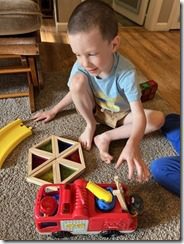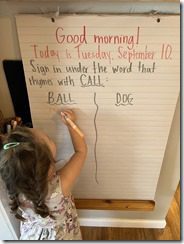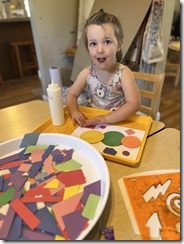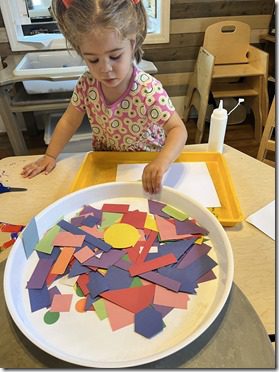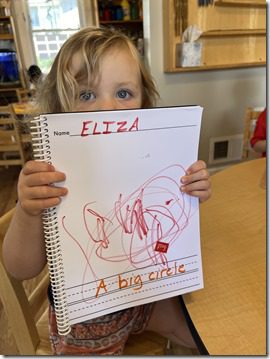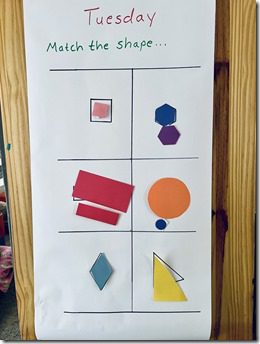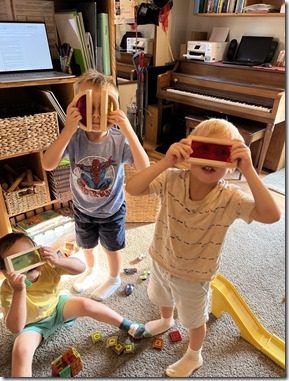Good Afternoon!
There are a handful of conversations that we have with parents year in and year out and tried and true, one of them is napping and bedtime routine. Wee Friends offers a quiet environment conducive to good napping in both classrooms and our teachers value naps. For the preschoolers, we often get requests to discontinue napping and we do work with parents and respect their wishes when possible and developmentally appropriate. However, I wanted to offer some research as to why we value the nap.
We have so much going on throughout the day that naptime provides children a time to relax, calm their body, and recharge for the afternoon. This often means a nap for most of our kiddos. Children are working on their social and emotional skills, fine and gross motor skills, and soaking in and learning things everyday, which can be exhausting!
In the article Daytime Naps Enhance Learning in Preschool Children, the author writes, “Essentially we are the first to report evidence that naps are important for preschool children,” Spencer says. “Our study shows that naps help the kids better remember what they are learning in preschool.”
The author goes on to say, “While the children performed about the same immediately after learning in both the nap and wake conditions, the children performed significantly better when they napped both in the afternoon and the next day,” the authors summarize. “That means that when they miss a nap, the child cannot recover this benefit of sleep with their overnight sleep. It seems that there is an additional benefit of having the sleep occur in close proximity to the learning.”
Clearly, naps can be an important part of children’s day. But what if a child is struggling at night with falling asleep?
I’ve attached a few articles below that offer suggestions for the do’s and don’ts before bed as well as how to set up an achievable bedtime routine.
In the article Bedtime Routines for Children, the author shares, “Research shows that children who follow bedtime routines are more likely to go to sleep earlier, take less time falling asleep, sleep longer, and wake up less during the night.”. They go on to say, “Toddlers will also try to assert their newly found independence by acting out or resisting bedtime. You can head off their stalling tactics by letting them make some of their own decisions, such as what pajamas to wear or which book to read. You may need to exert some creativity to make the bedtime routine more fun. When it’s time for lights-out, calmly and firmly bid them goodnight, and leave the room.”
So, how do we set up a bedtime routine and what does this look like? The goal of a good bedtime routine is to have a consistent set of activities that get a child ready for bed—and you want your child to fall asleep independently. If children are used to falling asleep by themselves, they’re more likely to put themselves back to sleep during the night if they wake. There is no single right way to set up a bedtime routine because all kids are different and need different things. Some may want to hear a bedtime story, others may want to talk about their day, and some may just want lights out and go to sleep. What we can share is that a new routine does not happen over night and consistency is key! There may be some tears or pushback at bedtime but it’s important to stay consistent. These articles below offer great suggestions and we are always willing to work with you and figure out something that works for you and your family!
Here are a few do’s and don’ts from Bedtime Routines for Children that are important to try and follow:
Do’s
1. Do it every day.
2. Keep it short and sweet.
3. Keep it up during the day.
Don’ts
1. Start bedtime when they’re already sleeping (being overtired can result in hyperactivity or grumpiness which makes it harder to fall asleep).
2. Let them use screens.
3. Let them run around.
4. Let them sleep in on weekends (straying more than an jour from the usual wake up time can actually cause trouble falling sleep on weekdays).
We are always so thankful to our families for bringing up concerns or questions to us as we love to work with parents to ultimately help set these kiddos up for success in all facets of life!
Articles about naps:
Daytime Naps Enhance Learning in Preschool Children
https://www.sciencedaily.com/releases/2013/09/130923155534.htm
Napping Helps Children Retain Memory, Learn New Skills
Naps Can Aid Learning in Preschoolers
https://newsinhealth.nih.gov/2013/12/naps-can-aid-learning-preschoolers
Articles about setting up a bedtime routine:
Bedtime Routines for Children
https://www.sleepfoundation.org/children-and-sleep/bedtime-routine
How to Create a Good Bedtime Routine for Your Child
https://www.sleepfoundation.org/children-and-sleep/bedtime-routine
____________________________________________________________________________________________
Enjoy a few pictures from our day!
Breakfast– Kix and fresh blueberries.
Lunch– Chicken avocado sandwiches on whole wheat bread with cucumbers/tomatoes and watermelon
PM snack– Whole wheat bagel with cream cheese.
Wee Sprout– Fresh cucumbers.
Have a wonderful night!
-Wee Friends Teachers
Link to pictures:2024-9-11

